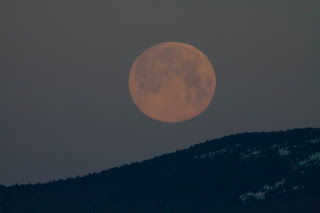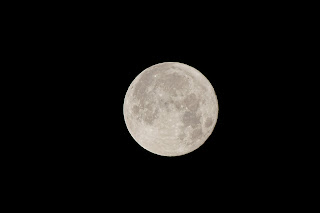 On April 22 the world will be celebrating the 48th
anniversary of Earth Day. Earth day is a
day the world turns its’ attention to the importance of our environment and the
challenges it faces. It’s a day where organizers all over the world coordinate events
which shine a light on certain environmental issues and propose ways how we can
make the necessary changes to make the Earth a cleaner and healthier place for
all living creatures including the earth, herself.
On April 22 the world will be celebrating the 48th
anniversary of Earth Day. Earth day is a
day the world turns its’ attention to the importance of our environment and the
challenges it faces. It’s a day where organizers all over the world coordinate events
which shine a light on certain environmental issues and propose ways how we can
make the necessary changes to make the Earth a cleaner and healthier place for
all living creatures including the earth, herself.
As far back as the late 1800s, conservationists celebrated
Arbor Day (April 27th) and Bird Day (May 4th) which
support forestation conservation and nature appreciation, respectively. They
were the first efforts to help educate the general public about the need for
environmental conservation. A watershed
moment came in the early 1960’s with the success of Rachel Carson’s book,
Silent Spring which was the first book to shine the light on the use of
pesticides and the effects they had on nature. By the late sixties, there was a
groundswell of activists and environmentalists who realized our environment was
being trashed and official policy changes would be needed. In 1969, an oil
spill off the coast of Santa Barbara killed 10,000 seabirds, dolphins, seals
and sea lions – further catalyzing the need for governmental change and
regulation.
The seeds were planted in 1969
The National UNESCO Conference met in October 1969 and environmentalist/activist John McConnell proposed a holiday focusing on the Earth's life and beauty as well as to advance peace. He also wanted it to be a day of educating people about the need for preserving and renewing the threatened ecological balances upon which all life on Earth depends. Senator Gaylord Nelson of Wisconsin agreed saying, “We have but one earth, so we need to take care of her”; declaring April 22, 1970 as the first Earth Day ever. There were smaller celebrations before there was an official proclaimed date. Many choosing to celebrate Earth Day on the first day of spring. They would gather to ring the Japanese Peace Bell at the United Nations at the first moment of the vernal equinox. Bells would ring at this time all over the world.
But organizers of Earth Day wanted to be able to make the
biggest impact and maximize participation on college campuses and March 12st
was too close to spring break, mid-terms, and the religious holidays of
Passover and Easter. So they opted to choose April 22nd which was
close to the birthday the “Father of the National Parks” naturalist,
environmentalist, John Muir who birthday is April 21 which the National Parks
Department had been celebrating for years already.
Interestingly, there were some citizens and government
officials believed the event to be some sort of communist act of sorts since
the event coincidentally coincided with the 100th anniversary of
Vladmir Lenin’s birthday. The FBI
reportedly conducted surveillance at the first Earth Day event send agents to
various demonstrations being held that day. A woman from the Daughters of the
American Revolution was quoted in a New York Times articles as saying,
“subversive elements plan to make American children live in an environment
that’s good for them.” God forbid anybody to that! Geez. You see, it wasn’t just that it was Lenin’s
birthday but also the fact that Lenin would institute subbotnik which were
mandatory days of unpaid work on weekends where citizens cleaned up
neighborhoods. As Lenin’s power grew he employed subbotnicks throughout the
USSR and other countries under Soviet control.
The first Earth Day celebration was focused in New York City
where with the blessing of Mayor Lindsey Fifth Avenue closed down to traffic.
Organizers knew this was the best place to start since the big 3 networks, the
New York Times and Newsweek were also all located in New York which was
important to organizers to have easy access to media and vice versa. Remember
this way before the days of the internet and getting the word out to the public
not as easy as a Tweet or Facebook post these days. There were estimated to
have over 20,000 people at this first event at any given time and a total over
100,000 over the course of the day. It marked the first time in history that
environmentalists had the nationwide platform to get their message out of
public and government officials to do more to protect our planet. It was a national
day of education for Americans about our environmental issues the country was
facing at the time.
 As a result of Earth Day, policy changes lead to the passing
of the Clean Air Act of 1970 which marked a major shift in the government’s
role in controlling air pollution and by December 2, 1970, the Environmental
Protection Agency (EPA) was started. The
single agency would encompass responsibilities covering federal research and
monitoring, standard setting and enforcement of policies set to ensure the
protection of our environment. Major
changes to the Federal Water Pollution Control Act of 1948, through sweeping
amendments were also passed in 1972 making the law better known as the Clean
Water Act (CWA), all as a direct result of the formation of Earth Day.
As a result of Earth Day, policy changes lead to the passing
of the Clean Air Act of 1970 which marked a major shift in the government’s
role in controlling air pollution and by December 2, 1970, the Environmental
Protection Agency (EPA) was started. The
single agency would encompass responsibilities covering federal research and
monitoring, standard setting and enforcement of policies set to ensure the
protection of our environment. Major
changes to the Federal Water Pollution Control Act of 1948, through sweeping
amendments were also passed in 1972 making the law better known as the Clean
Water Act (CWA), all as a direct result of the formation of Earth Day. By 1990, the celebration had blossomed, growing to 200
million people and went international for the first time with events held in 41
countries. There were two separate groups formed that sponsored the Earth Day
events that year: the Earth Day 20 Foundation and Earth Day 1990. Disagreements
between the organizers lead to the why two separate groups were formed. Earth Day 20 organized a climb of Mount
Everest that year. Jim Whittaker, the first American to ever summit Everest
years earlier, climbed roped together with climbers from the Soviet Union and
China – a first in climbing history.
With the help of multitude of support teams, they cleaned up 2 tons of
garbage that have been left behind by previous climbers over the years. Two tons of garbage on Everest – even the
highest mountain in the world is not safe from human litterers.
By 1990, the celebration had blossomed, growing to 200
million people and went international for the first time with events held in 41
countries. There were two separate groups formed that sponsored the Earth Day
events that year: the Earth Day 20 Foundation and Earth Day 1990. Disagreements
between the organizers lead to the why two separate groups were formed. Earth Day 20 organized a climb of Mount
Everest that year. Jim Whittaker, the first American to ever summit Everest
years earlier, climbed roped together with climbers from the Soviet Union and
China – a first in climbing history.
With the help of multitude of support teams, they cleaned up 2 tons of
garbage that have been left behind by previous climbers over the years. Two tons of garbage on Everest – even the
highest mountain in the world is not safe from human litterers.
Earth Day 2000 marked the first time organizers used the
internet and featured a drum chain that travel to villages in Gabon, Africa.
The focus that year was global warming and clean energy and hundreds of
thousands gathered in Washington sending a loud and clear message that we want
and need change.
Earth Day 2010 faced similar challenges as were faced in 1970. A divided environmental community didn’t help matters but the Earth Day Network managed to bring 250,000 people to a rally at the National Mall. They also launched – A Billion Acts of Green, the world’s largest service project which is a global tree planting initiative, known today at The Canopy Project.
Celebrated by a billion people all over the world, Earth Day
has truly become a celebration of our planet. A day mankind takes action that
changes policy and behavior. 2018, we will focus our attention on Earth Day on Ending
Plastic Pollution. In a nutshell here’s the problem and if you look around your
house, you’ll quickly realized why; there is way too much plastic in our world
and it’s not a good thing.
 Do you know your plastic footprint?
Do you know your plastic footprint?
You can figure it out by clicking this link to the Earth Day 2018 Plastic Footprint Calculator. Do you understand why
too much plastic is harmful to our environment? Let’s start there, why it’s so
harmful. First off, plastic is made from
refined oil and natural gas, so that right there is doing destructive things to
our environment. When it was first invented in 1907 by Belgian-born American,
Leo Hendrik Baekeland it was a game changer. So useful, it was used and still
is in everything from sealing up and preserving food in great little containers
to being used in cars, furniture, building materials and electronics. Initially
everyone just saw the benefits and didn’t take into consideration its
un-biodegradable nature. Diamonds may be forever, but so is plastic. Plastics are the most littered item in the world. It’s the hope of organizers this Earth Day 2018 to shed a light on this environmental worldwide issue in hopes of reducing the use of plastics. There are 9.1 billion tons of plastic produced to date. 6.9 billion tons becomes waste which left in dumps and landfills – That waste isn’t going anywhere folks! They estimate it will be 13.2 billion tons by 2020 if we continue at current rates. Product packaging is the number cause for the dramatic increases accounting for 42% of non-fiber plastic products in 2015 alone. Making up of 59% of the plastics discarded that year.
What can we do to celebrate and acknowledge Earth Day in our lives? Well for one thing simply learning a little about the problem can help a lot. When people understand what the problem is and why it’s happening, they are usually readier to make the changes needed and are more willing participants in that change. Change is difficult and breaking old habits is hard. Since plastic is the one the main focuses this year on Earth Day, I plead to make a more conscious effort to lower and minimize our plastic footprint. Hopefully, new legislation on the Hill will open up new avenues for more sustainable alternatives, such as the use of hemp-based products which could replace a lot of plastics and is much more environmentally friendly.












